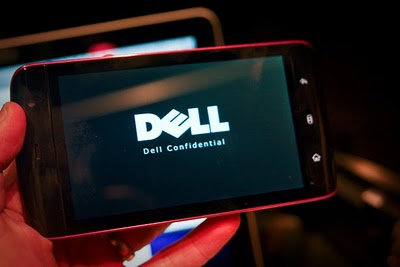
Asus TS500-E6 P4
The Asus TS500-E6/PS4 is the only dual processor 5U server sold by the manufacturer. The TS500 is sold as a barebones server, so you have to buy it through a reseller. The base price is $699, which is low, considering you can outfit it with two Intel X5500 processors—and remember, that price is before you include processors—or much else. Asus did not provide us with the price for the configured test server, we had to ask a reseller: Colfax sells it with the 24GB of memory that Asus tossed in for $4,450 After factoring the design, management and that price, it’s clear the Asus TS500 is a good deal for businesses that require a super fast server, but it’s not cheap if you want it this fast. Less RAM and a lower price might make it even more attractive.
Design and Setup
The TS500’s tower case (5U) is about the same size as the HP Proliant ML330 G6. By contrast, Dell chose a standard PC case for its PowerEdge T110 server series. Like the HP ML330, the TS500 protects the drive bay with a door. The front bay can house four full-size hard drives. At the bottom right, in an unusual arrangement, Asus placed the audio ports above two USB ports. On the back, Asus kept the old style setup: PS/2 ports for keyboard and mouse, VGA, serial port, and two USB ports. Finding two Ethernet ports was a nice surprise, especially considering the base price of this server. With two network connections you can do a little more than just run line of business applications. For instance, you can squeeze more horsepower out by running multiple virtual machines, and even segment your network with virtual LANs to manage your VoIP communication or comfortably run Exchange Server by separating the external and internal access to the mail server.
The TS500 I tested arrived with two Intel X5560 quadcore processors, 24 GB of memory and a 1 TB drive. There’s ample room for PCIe cards, a couple of optical drives and an extra drive bay. The motherboard supports eight more drives. A large fan in the back keeps the server cool. The case is large enough to dampen most of the noise from the air flow inside it. For safety, the server includes a power switch for the side panel. Opening the panel triggers the switch and an alert message is generated in the Asus System Web-based Management software (ASWM).
The TS500 is sold barebones, so pricing varies depending on the components you add. The unit I received was configured by Asus, and came without an operating system. After slapping Windows Server 2008 on it, I installed ASWM for management. ASWM integrated well with Windows Server 2008 and was able to discover all components and peripherals.
Management
The ASWM matches some of the functionality of the Dell OpenManage software on the PowerEdge T110, but it has some shortcomings. You can’t manage client connections unless they use the internal VNC server in ASWM. ASWM cannot shutdown the server as easily as OpenManage. There is an agent that you can set up to shut down the server but the options are more restricted. Yet, the interface is friendly and simple to use.
With the ASWM interface you can identify alerts quickly, and set high and low thresholds with graphical sliding bar. The layout of the inventory is intuitive, even for novice administrators. ASWM performs a thorough software inventory of the TS500. You can even stop and start services and track the resources consumed by processes.
Performance
After running Geekbench 2.1 64-Bit on the TS500, I got a whopping score of 14,711. Of course, the two X5560 processors and the 24 GB of memory bumped its performance by a large margin. By contrast, the HP ML 330 with only 8MB of memory and one quad-core CPU scored 5,430 on the same test. We took out DIMMs from the Asus and retested it and still got a great 14,364. With Cinebench R10 64-Bit CPU test, the TS500 managed to top at 26,456 with 24 GB, and did even higher at 28,771 with 8GB; the HP ML330 scored 10,975. Obviously, the dual quad-core processors are doing all the heavy lifting in these tests, less memory didn’t change much.
I also ran the IOzone 3.321 network file system benchmark to test disk I/O and RAID performance. Unfortunately, IOzone could not execute on the command line. It got exceptions every time I ran it. But I saw no other problems with the RAID performance of the server.
Bottom Line
The Asus TS500-E6/PS4 server can certainly run the most demanding line of business applications on the market, as performance tests showed. Moreover, the two Ethernet ports put it on the same level as the HP ML330 for usefulness. The barebones system is an incredible deal, and even over-configured as it came to us, the price of $4,450 isn’t totally outrageous. It’s worth serious consideration for any office that can afford it, but for most might be overkill.
 Dell Mini 5 will present the design of mobile tablet with a larger screen size, which is five inches. “Dell Streak will be present with a combination of traditional smart phones and tablets big sail,” says Ron Garriques, Communications Solutions Group, Dell’s president, quoted from page Cellular News, Wednesday, May 26, 2010.
Dell Mini 5 will present the design of mobile tablet with a larger screen size, which is five inches. “Dell Streak will be present with a combination of traditional smart phones and tablets big sail,” says Ron Garriques, Communications Solutions Group, Dell’s president, quoted from page Cellular News, Wednesday, May 26, 2010.

